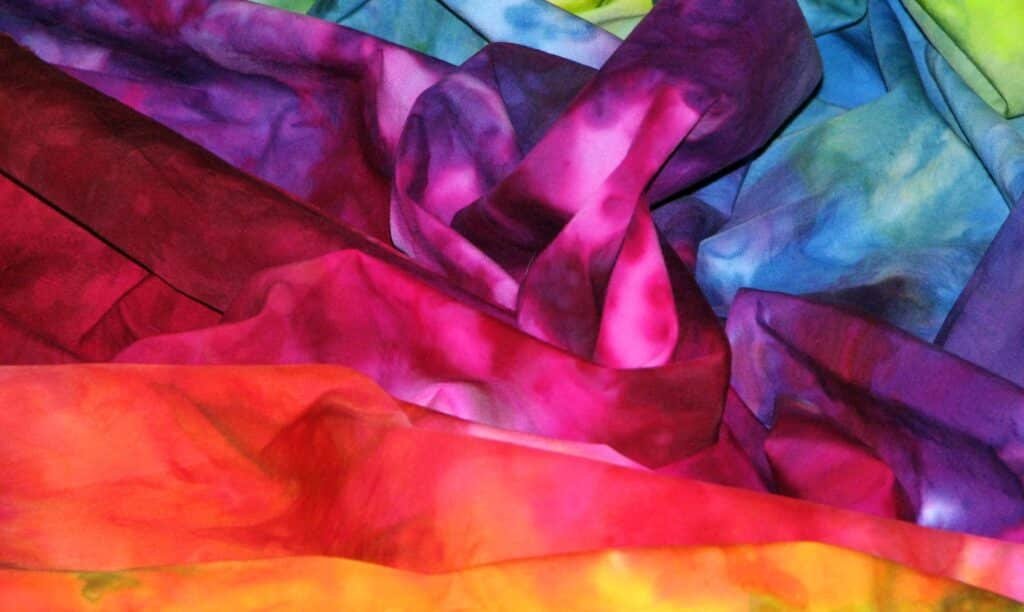What Is Synthetic Fabric & Dyeing Synthetic fabric – might have always been a wonder to you. To clarify, synthetic fiber is a type of textile fiber that is entirely chemical based as opposed to fibers made of natural materials like cellulose or protein. So, dying synthetic fabric is crucial. You must know the right procedure for dyeing synthetic fabric. Additionally, you need to measure a few key factors while dyeing synthetic fabric. So, today we will share everything you need to know about dyeing synthetic fabric.
You Can Dye a Synthetic Fabric
You can dye synthetic fabric. Many of us purchase synthetic fabric-based and colored clothes. Now the question is, “Can we dye synthetic materials at home?” Yes, you can, but it’s a little more challenging to do so than it is to dye natural fibers like cotton, wool, or linen.
What makes that so? Because from plastic polymers, we can make synthetic fabrics (or fibers). Polyester is the most popular plastic fiber from which we can create synthetic garments, but there are others as well, including nylon, acetate, acrylic, etc. Since plastic fibers have hydrophobic compounds, plastic is famous for its ability to repel water. If you interpret this literally, it suggests that they are “afraid” of the water.
Additionally, it means that synthetic fabrics and fibers have the propensity to reject the majority of water-based garment dyes. You must use a particular kind of dye that isn’t hydrophobic if you want clothing dye to bind to a synthetic fabric. Additionally, you must ensure that you are using the appropriate dyeing technique. This entails carefully following the instructions so the fabric holds the dye without any harm.
What Is the Best Dye for Synthetic Fabric?
The best and really only sort of dye to use on synthetic materials is disperse dye. Disperse dye differs from other kinds of clothing dyes in its composition. They are made of a similar material to that of synthetic fibers since they are made from certain oils. As opposed to water-based dyes, synthetic fibers may now absorb the pigment more readily.
Disperse dye is the ideal and only type of dye to use on synthetic materials. Disperse dye’s composition sets it apart from other types of textile dyes. Since they are manufactured from specific oils, the substance they are constructed of is comparable to that of synthetic fibers. Synthetic fibers may now absorb the color more quickly than they did with water-based dyes.
How to Dye Synthetic Fabric at Home
Essential Materials
- Disperse dye (such as Rit DyeMore)
- Stainless steel pot
- Measuring cup
- Tongs
- Plastic gloves
- Dish detergent
- Newspaper/plastic tablecloth
Preparation
- To determine the amount of dye you’ll need, weigh the fabric (when it’s dry) that you wish to color. You can find instructions on how much color to use based on the weight of the package.
- It is advised to test a tiny area or a fabric swatch to see how the dye will appear before dying the entire item. If extra dye is needed, you can make the color darker.
- Remove any stains from the fabric or clothing before giving it a thorough wash without fabric softener.
- To stop any dye from ruining your counters or table, cover your workspace with newspaper or a plastic tablecloth.
- To avoid dye stains on your hands and garments you don’t want to get stained, wear rubber gloves, old clothes, or an apron.
Dyeing Process of the Fabric
- Put enough water in a big stainless steel kettle to cover the fabric and let it float. To keep the pot from getting stained by the dye, stainless steel is required.
- To the water, add 1 teaspoon of dish soap. The fabric will color more evenly as a result of this.
- Heat the saucepan with the lid on until the water is just about to boil. Around 200°F is the perfect water temperature.
- When the water is simmering, add the color after thoroughly shaking it. To properly distribute the dye, combine it with water.
- Before adding the fabric to the dye pot, thoroughly wet it.
- Use tongs to stir the fabric in the dye for at least 10 minutes while maintaining a simmer in the water. For the clothing to be dyed evenly, frequent stirring is essential.
- When dying nylon, you can take the fabric out of the dye after 10 to 20 minutes. So, we suggest soaking the fabric in the dye for at least 30 minutes when dying polyester or polyester blends. Be careful to keep agitating the fabric constantly.
- When you achieve the desired color, remove the fabric from the dye and squeeze off any extra dye. Keep in mind that when the fabric has dried, the color may appear lighter.
- Rinse the fabric in warm water, gradually lowering the temperature so that the water runs clear as it comes off the fabric.
- You should use warm water and a light detergent to hand wash the fabric. After rinsing, let the fabric air dry.
Few More Considerations
Color of the Fabric
You shouldn’t worry too much if the fabric you’re dying is white, because any color should pop and look fantastic. You must dye the fabric with a darker color if you are dying previously colored garments. Additionally, when dyeing such fabrics, you cannot acquire the new dye’s actual color. The majority of dye removers available on the market do not work on synthetic textiles.
Patterns or Logos
Dyeing a piece of fabric that has patterns and logos on it will be more difficult. Color will eventually appear on the patterns and logos; you cannot avoid it. Any patterns and logos will, therefore, appear differently after finishing the dying procedure. A useful guide on what to expect when dying clothing with patterns and logos is provided by Rit Dye.

Dyeing Bleach Stains
Be aware that it might not work as you expect if you dye garments to cover a bleach stain. This is due to the fact that bleach can cause fiber damage that goes beyond simple surface wear, and bleached portions may not absorb color as well as the rest of the cloth. Even after you dye them, you may still be able to see the bleach stains.
The same applies to bleach-caused stains. The fabric could dye in an inconsistent manner if there are any stains on it. Uneven coloring can also be brought on by chemical residues, such as those left over after the use of fabric softeners. For this reason, it’s crucial to get rid of stains and wash any fabric before attempting to color it.
Washing the Fabric
The dye should stick to the fabric very well if you are using the proper dye and dyeing techniques. However, if you used the incorrect color or didn’t thoroughly clean the fabric, the dye may leak slightly when you wash it. For the first few washes, it’s crucial to wash freshly colored fabric by itself to prevent dye bleed onto your other garments.
Alright, so now you know pretty much everything you need to know about dyeing synthetic fabric. You will get all these clothes at the Beautiful Connection Group. This clothing manufacturing company is well-known for its best service with the best reasonable deals. They provide all types of customized clothing items like skirts, hoodies, tops, leggings etc. You can check out their website for any further information.

